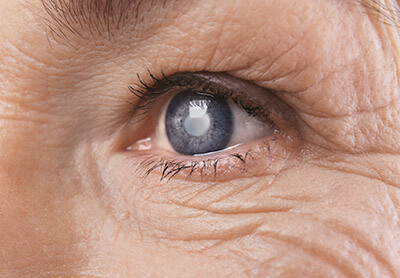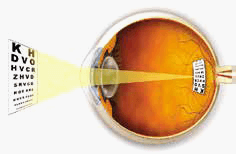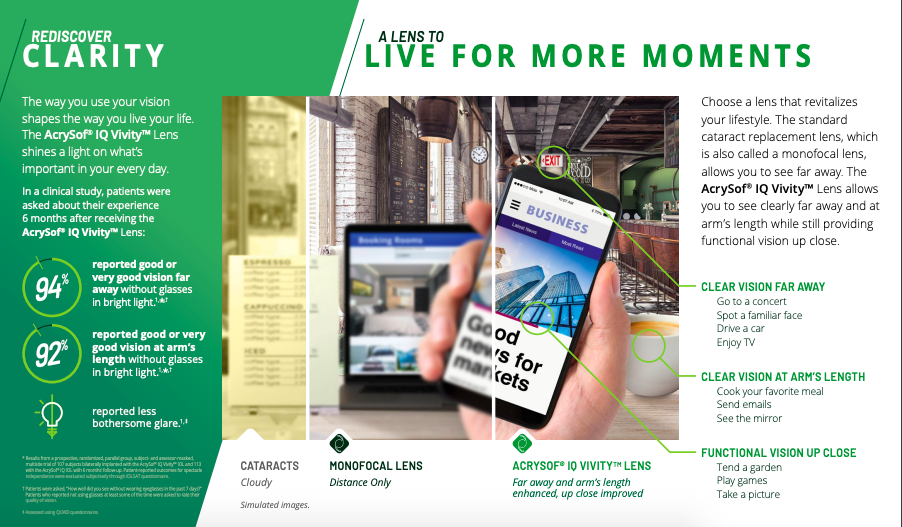Digby Eye Associates specializes in restoring sight to people whose vision has been impaired by cataracts. Since 1980, our surgeons have performed over 35,000 cataract surgeries. The techniques developed at Digby Eye Associates have helped set standards of excellence and have attracted patients from across the United States and extended out across the world. This technical excellence, combined with warm, personal care, makes the cataract surgery experience at Digby Eye Associates truly unique.
What is a Cataract?

A cataract is a cloudiness that develops in the normally clear lens of the eye. A natural lens is referred to as a cataract when it has turned cloudy.
Everyone who lives a long life will develop cataracts. The cloudiness does not spread from one eye to the other, but cataracts will usually develop in both eyes at some time. Some cataracts mature slowly over a period of years, whereas others can form rapidly within a few months.
What Are The Symptoms of Cataracts?
Some common symptoms of a cataract are:
- A gradual loss of color vision–objects appear yellowed;
- Increasing haziness causing blurred and distorted vision;
- The appearance of dark spots or shadows that seem to move when the eye moves;
- An increasing need for more light to see clearly;
- Glare at night–haloes or colored rings around lights;
- A tendency to become more nearsighted because of the increasing density of the lens;
- A stage where it is easier to see without glasses than with them–second sight;
- Double vision, which persists even if only one eye is open;
- In advanced stages, a change in the appearance of the pupil–it may appear white or yellow.
A person experiencing these visual problems should have a thorough eye exam so the underlying condition can be diagnosed. If you think you may have a cataract, please contact us to schedule an evaluation. You will be given a comprehensive eye examination to detect the presence of a cataract or any other condition which might be affecting vision.
What Are The Benefits of Cataract Surgery?
There are numerous benefits of cataract surgery:
- Improved Color Vision: Colors are brighter and more vivid after cataract surgery.
- Greater Clarity of Vision: Vision is crisper and sharper after cataract surgery.
- Improved Quality of Life: Studies have repeatedly shown that people enjoy improved quality of life after successful cataract surgery. Many people can resume driving, thereby gaining greater independence. Favorite activities such as reading, sewing, carpentry, baking or even using a computer are generally easier after cataract surgery. Even when retinal diseases or other problems prevent a total restoration of vision, the remaining vision is usually improved by a cataract surgery.
- Greater Freedom From Corrective Lenses: With the advancement of laser cataract surgery and in the technology for lens replacement, these new treatment options give you more choices to make based on your lifestyle. You will be able to decide if you would prefer glasses for close, far, or computer vision or if you would prefer to reduce or eliminate the need for glasses after your surgery? You and your surgeon can determine what is best for you.
Which Lens is Right for Me?
There has never been a better time to have cataract surgery. Today, patients can choose from a wide variety of replacement lenses, and the results can be extraordinary. Depending on the lens you choose, you could have clear, sharp vision, with an increased opportunity to be less dependent on glasses or other corrective lenses! Call us at Digby Eye Associates today to get scheduled for your cataract evaluation.
An intraocular lens, or IOL, is an artificial lens used to replace your cloudy natural lens. Here are three of the most common types of IOLs currently available and what each is designed to do for your vision:
LenSx® Laser
Today, patients like you have a choice: There’s manual surgery and bladeless procedures assisted by advanced laser technology. The LenSx® Laser, for example, offers image guidance for predictability and enhanced precision.
The ORA SYSTEM® with VerifEye®+ Technology
You now have the option to create a customized cataract procedure designed to correct conditions such as astigmatism and presbyopia during your cataract procedure. The ORA SYSTEM® with VerifEye®+ technology is one of the technologies your doctor will use to tailor your cataract procedure to your unique eye.
What Are The Risks of Cataract Surgery?
Serious complications with IOL implants are extremely rare. It is a safe and effective procedure but like any procedure, it does have some risks. Potential complications include infection or hemorrhage within the eye, retinal detachment or persistent double vision. The odds of experiencing any of these complications are very low–between one in 1,000 for hemorrhages and one in 10,000 for infections. Usually, such rare complications can be treated or controlled, either during the surgery or afterward.
The very small risks associated with cataract surgery are more than offset by the excellent results. At Digby Eye Associates, over 99 percent of cataract surgery patients enjoy good vision after their surgeries, when no other serious eye problems existed before the surgery. Eye diseases or problems with the retina or optic nerve may limit the potential for clear vision even when the cataract surgery itself has been successful.
Secondary Cataracts
A small percentage of people develop a condition known as secondary cataracts in the months or years after cataract surgery. In these cases, new cloudy cells gradually cover the back of the lens capsule, just as frost covers a window. Light cannot be focused clearly through these cloudy cells and vision is once again obscured. People may fear that their cataracts have returned. It is not possible for a cataract to grow back completely, so the term “secondary cataract” is misleading.
Fortunately, secondary cataracts can be treated very easily. A quick, painless laser treatment called a YAG Laser makes a small opening in the back of the lens capsule, without disturbing the lens implant or any other tissues within the eye. Light can once again be focused on the retina and clear vision is restored.




